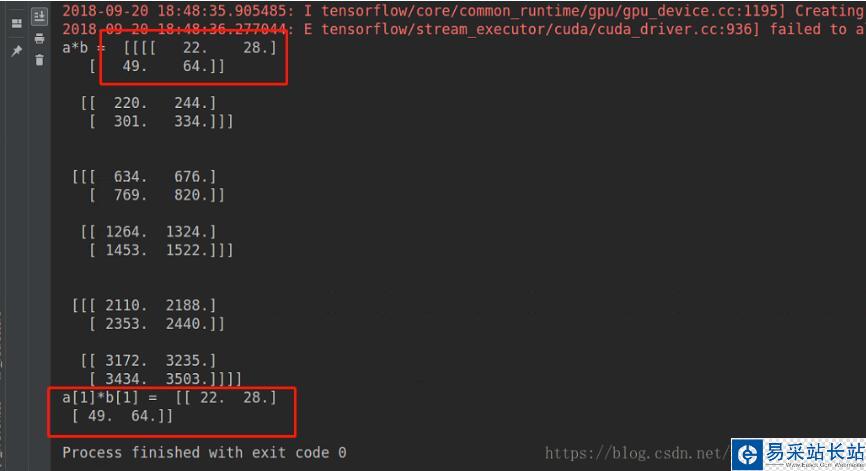两个三维矩阵的乘法怎样计算呢?我通过实验发现,tensorflow把前面的维度当成是batch,对最后两维进行普通的矩阵乘法。也就是说,最后两维之前的维度,都需要相同。
首先计算shape为(2, 2, 3)乘以shape为(2, 3, 2)的张量。
import tensorflow as tfimport numpy as npa = tf.constant(np.arange(1, 13, dtype=np.float32), shape=[2, 2, 3])b = tf.constant(np.arange(1, 13, dtype=np.float32), shape=[2, 3, 2])c = tf.matmul(a, b)# c = tf.matmul(a, b)sess = tf.Session()print("a*b = ", sess.run(c))c1 = tf.matmul(a[0, :, :], b[0, :, :])print("a[1]*b[1] = ", sess.run(c1))运行结果:

计算结果表明,两个三维矩阵相乘,对应位置的最后两个维度的矩阵乘法。
再验证高维的张量乘法:
import tensorflow as tfimport numpy as npa = tf.constant(np.arange(1, 36, dtype=np.float32), shape=[3, 2, 2, 3])b = tf.constant(np.arange(1, 36, dtype=np.float32), shape=[3, 2, 3, 2])c = tf.matmul(a, b)# c = tf.matmul(a, b)sess = tf.Session()print("a*b = ", sess.run(c))c1 = tf.matmul(a[0, 0, :, :], b[0, 0, :, :])print("a[1]*b[1] = ", sess.run(c1))运行结果:

以上这篇tensorflow多维张量计算实例就是小编分享给大家的全部内容了,希望能给大家一个参考,也希望大家多多支持武林站长站。
新闻热点
疑难解答